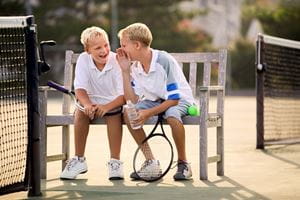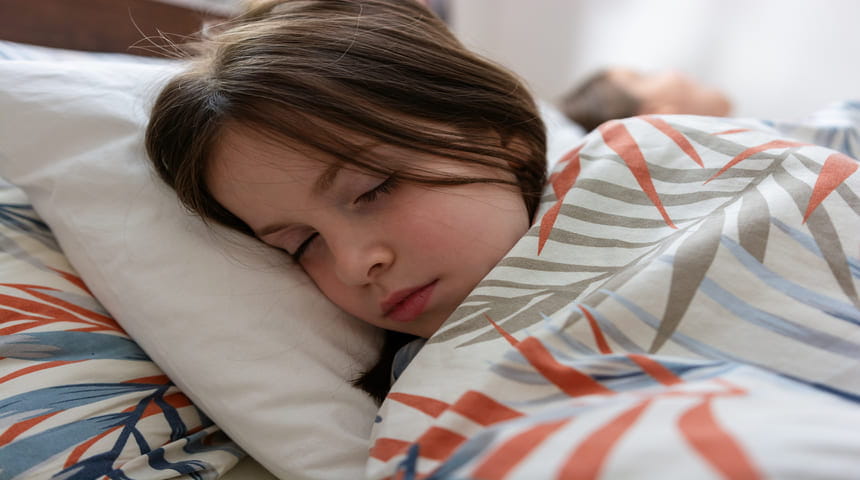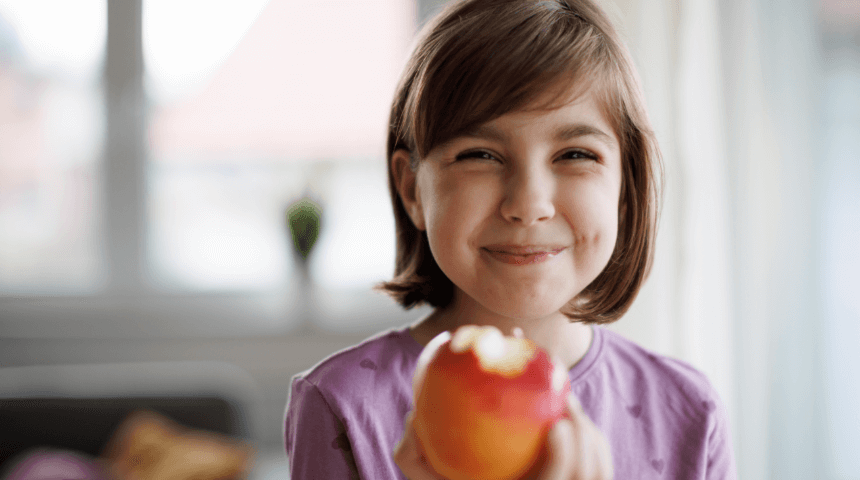How to Keep Your Kids Hydrated in the Summer Heat
As we head into warmer months, parents often have questions about how to keep their kids hydrated. Recommendations about juice and other drinks from the American Academy of Pediatrics are broken down by age group below. Also, I’ll share with you some fun recipes from to help cool down and incorporate fruit into your child’s diet this summer. These recipes use whole fruit without added juice, juice drinks, or sugar to give your child all the nutritious benefits of eating fruit and staying hydrated.
What should my child be drinking?
Babies
The only drink infants up to 6 months of age should consume is breastmilk or formula. Children younger than 6 months do not need additional water in order to stay appropriately hydrated, and giving children less than 6 months of age other drinks could cause electrolyte problems. For breastfeeding mothers, the best way to keep your infant hydrated is to stay hydrated yourself so make sure you are drinking plenty of water.
Children younger than one year of age should not be drinking fruit juice (even if it is 100% juice) or other sugar sweetened beverages including tea, soda, or other fruit drinks. There is no nutritional benefit to drinking fruit juice in this age group; it’s better to eat the fruit instead of drinking the juice. Eating fruit provides more nutrition like fiber in the diet for children. Water and milk should be the only liquids children 6 months to 1 year of age drink.
Toddlers
Fruit juice is still not recommended over eating fruit for children greater than 1 year of age because it gives extra calories and sugar, which could contribute to weight gain and tooth decay. For toddlers who are 1 to 3 years old, intake of juice should not be more than 4 ounces a day. If you wish to give your toddler 4 ounces of juice daily it can be mixed with equal parts water, and it should never be given in a sippy cup to carry around throughout the day as this allows sugar to sit constantly on teeth and contributes to tooth decay. It should only be given at meal times and should never be given before bed. Children in this age group should be encouraged to eat fruit.
Water and low-fat or nonfat milk should remain the primary drinks for toddlers.
Children
If your child is aged 4 to 6, he or she should be limited to 4 to 6 ounces of 100% fruit juice daily, and no child 7 years or older should drink more than 8 ounces of 100% fruit juice per day. Water should be the primary source of hydration.
Remember, fruit juice should not be given as a treatment for concerns of dehydration or if a toddler is experiencing diarrhea because fruit juice will make diarrhea worse.
What about hydration during physical activity?
 If your child is participating in physical activity lasting greater than 60 minutes, hydration prior to the activity and frequent hydration throughout the activity is important.
If your child is participating in physical activity lasting greater than 60 minutes, hydration prior to the activity and frequent hydration throughout the activity is important.
A 70 pound child should drink at least 8 to 10 ounces of water in the 2 hours before the activity while a teenager should drink at least 12 to 20 ounces of water during this time.
During the activity, children should take a break approximately every 15 minutes to drink water. If the activity is in a hot environment and lasts more than 1 to 2 hours, sports drinks may be useful to give back electrolytes and carbohydrates, but they should be given sparingly.
Sports drinks provide extra calories that are not needed by children not participating in vigorous physical activity lasting more than 1 to 2 hours and should not be regularly consumed outside physical activity. Energy drinks containing common stimulants like caffeine, guarana, and taurine should be avoided for all children because they have been linked to harmful effects on a child’s developing cardiovascular and neurologic systems.
Water and a balanced diet of fruit and vegetables provide the best fuel for physical activity.
Here are a few fun recipes to make with kids on hot summer days:
Blueberry Smoothie (Makes 2 servings):
Ingredients:
- ½ cup water
- ½ cup plain low-fat yogurt
- 1 cup fresh or frozen blueberries
- ½ ripe banana peeled and sliced (preferably frozen)
- 2 ice cubes
Instructions:
- Wash hands with soap and water
- Put all ingredients in the blender
- Turn the blender on to medium and blend until mixture is smooth, about 2 minutes
- Serve immediately in 2 glasses or may be covered and refrigerated up to 4 hours
Tropical Smoothie (Makes 2 servings):
Ingredients:
- ½ cup ripe banana slices (preferably frozen)
- 1 tablespoon almond or peanut butter (Leave out if allergic to nuts)
- ½ cup fresh, frozen, or canned pineapple chunks (not in syrup)
- 1 seedless orange, peeled and sectioned
- 2 ice cubs
- ¾ cup plain low-fat yogurt
- 1 tablespoon shredded unsweetened coconut
Instructions:
- Wash hands with soap and water
- Put the banana, almond or peanut butter, pineapple, and orange in the blender
- Turn the blender to medium and blend until the mixture is smooth
- Turn the machine off, and add ice cubes, yogurt, and coconut
- Turn the blender on to medium and blend until the ice is chopped and the mixture is smooth
- Serve immediately in 2 glasses or may be covered and refrigerated up to 4 hours
Kiwisicles (Makes 4 servings):
Ingredients:
- 1 kiwi
- 4 wooden ice-pop sticks
Instructions:
- Wash hands with soap and water
- Peel the kiwi and cut it into 4 thick slices
- Push a wooden stick into each slice and lay the “pops” on a Tupperware lid
- Freeze until solid, about 2 hours










